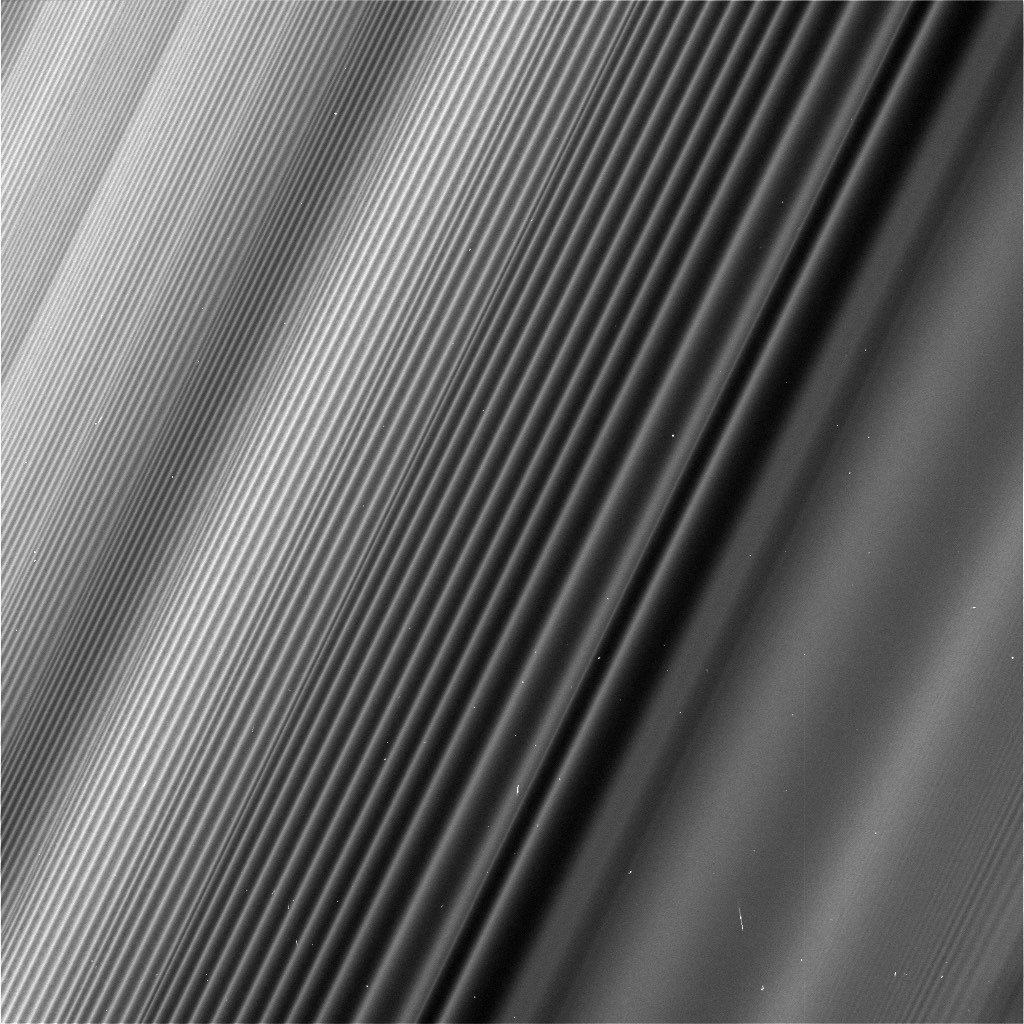The intricate wave structure of Saturn’s rings

On one of its final passes of Saturn, the Cassini probe captured this image of a wave structure in Saturn’s rings known as the Janus 2:1 spiral density wave. The waves are generated by the motion of Janus, one of Saturn’s smaller moons.
This wave is remarkable because Janus, the moon that generates it, is in a strange orbital configuration. Janus and Epimetheus (see “Cruising Past Janus”) share practically the same orbit and trade places every four years. Every time one of those orbit swaps takes place, the ring at this location responds, spawning a new crest in the wave. The distance between any pair of crests corresponds to four years’ worth of the wave propagating downstream from the resonance, which means the wave seen here encodes many decades’ worth of the orbital history of Janus and Epimetheus. According to this interpretation, the part of the wave at the very upper-left of this image corresponds to the positions of Janus and Epimetheus around the time of the Voyager flybys in 1980 and 1981, which is the time at which Janus and Epimetheus were first proven to be two distinct objects (they were first observed in 1966).
The photograph is also an optical illusion of sorts. The rings appear to be getting farther away in the upper lefthand corner but the plane of the photograph is actually parallel to the plane of the rings…it’s just that the wavelength of the density wave gets shorter from right to left.
Update: Here are those density waves converted into sound waves. The first set sounds like an accelerating F1 car.





Stay Connected